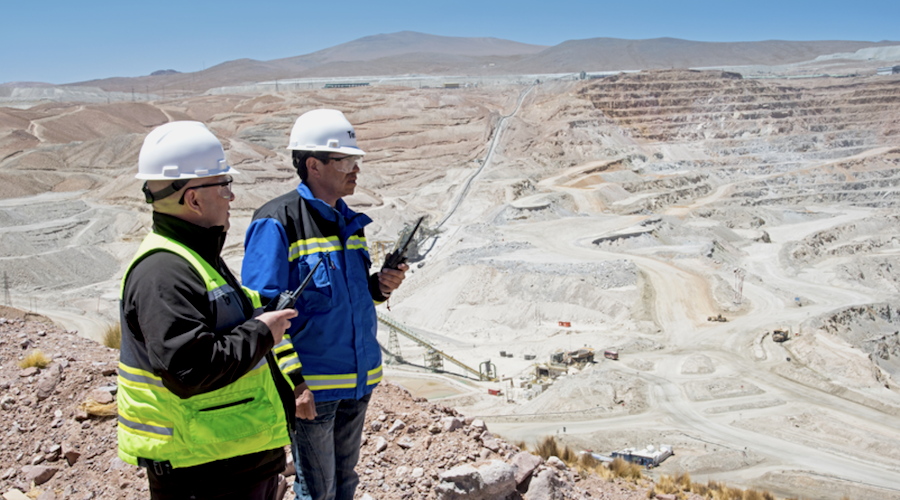Chile’s regulator orders permanent closure of Barrick’s Pascua-Lama mine

Chile’s environmental authority — SMA — has ordered the definitive closure of Barrick Gold’s (TSX, NYSE:ABX) already halted Pascua-Lama project, but lowered the fine for violations to 7 billion pesos ($11.5 million) from the previous $16 million it had charged the company.
“Given the nature and the size of the breaches that the company committed, there is the conviction that total and definitive closure, plus an economic fine, is the most proportional sanction in this case,” SMA head Cristian Franz said in a statement (in Spanish).
The environmental authority analyzed 33 charges and issued total closure sanctions for five of them, which include Barrick’s incomplete monitoring of glaciers and discharge of ‘acidic fluids’ into a river.
The world’s No.1 gold producer was quick to clarify in a statement that the SMA did not revoke Pascua-Lama’s environmental permit (RCA). Instead, it ordered the closure of existing surface facilities on the Chilean side of the project, in addition to certain monitoring activities.
Barrick added that such order was consistent with its plan to advance a study for an underground mining operation at Pascua-Lama, which it says would reduce the overall environmental impact.
The SMA said its resolution was based on the analysis of 33 charges, five of which warranted total closure sanctions. Those breaches include Barrick’s operations impacts on protected flora and fauna, incomplete monitoring of glaciers and discharge of “acidic fluids” into a river, related to acid rock drainage.
A company spokesman, Andy Lloyd, told MINING.com that none of those charges resulted in any permanent or irreparable damage to the environment. He also noted that a small area of vegas (alpine meadow) that was impacted by a landslide had already been rehabilitated.
The gold and silver mine straddling the border with Argentina has been shuttered since 2013, when a court ordered the company to halt construction over environmental concerns. Later that year, Barrick shelved the project citing massive cost overruns and nose-diving metal prices.
Ahead with the Lama portion
The original mine plan for Pascua-Lama contemplated an open-pit operation that would have had an effect on three small glaciers in the Chilean side of the Andes. It also involved major construction in the area and huge waste dumps.
In 2016, Barrick began a “drastic revision” of the project and agreed to pay $140 million to resolve a US class-action lawsuit that accused it of distorting facts related to the controversial project.
Shortly after, Barrick abandoned the idea of an open pit at the site, saying it plans to mine underground instead.
In April last year, it sold a 50% stake in its Veladero mine in Argentina to Shandong Gold Group in a transaction worth $960 million. As part of that deal, which made the two firms strategic partners, the Shandong province-based gold miner committed to help Barrick move forward with Pascua Lama.
In October, the company agreed to pay a further $20 million to a Chilean group in order to settle an arbitration case against the company filed last year after the gold producer halted payments settled in 2005.
Argentina has been an enthusiastic supporter of the project – while only around a fifth of the deposit is located in that country, many of the above-ground facilities will be built on that side of the border.
If it ever comes into production, Pascua-Lama would generate about 800,000 to 850,000 ounces of gold and 35 million ounces of silver per year in the first full five years of its 25-year life.
{{ commodity.name }}
{{ post.title }}
{{ post.date }}

4 Comments
Mark
Pretty sad that Barrick is being subjected to this extortion effort by the Chilean government. I thought Chile was above that banana republic nonsense, but I guess not.
Having said that, there’s no urgency to bring this mine on-stream. Chile may be doing this to increase its royalties down the road, rather than having the resource sold beneath long-term prices.
MiningWatch Canada
But does Barrick still hold the water rights?
shoshonite
Sold to the Chinese. Bet that goes well.
Kent Roche
This is what happens when you invest in funky fly by night foreign countries! Similar stuff going on in Mongolia! Invest and develop American and Canadian!….well maybe not Canadian…..you have a loon as PM!